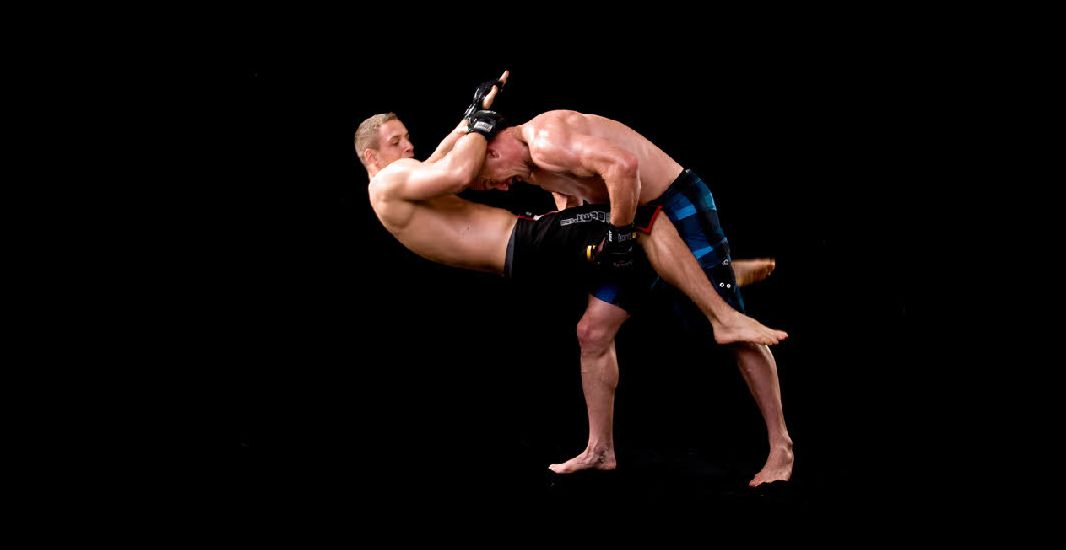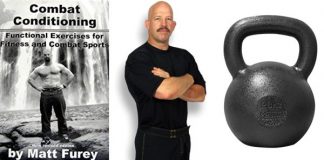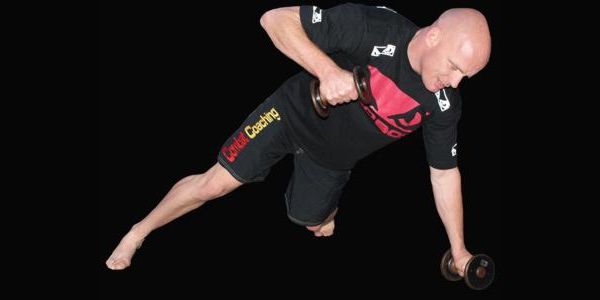 It is essential that you follow a scientifically developed training program that aids in developing explosive muscle tissue to perform at high intensity levels and muscle tissue that endures under extreme stress situations. Many so called “champions” walk into the Octagon tough, then when they lose, blame their conditioning for their poor performances. This one factor has cost many good fighters their titles and status.
It is essential that you follow a scientifically developed training program that aids in developing explosive muscle tissue to perform at high intensity levels and muscle tissue that endures under extreme stress situations. Many so called “champions” walk into the Octagon tough, then when they lose, blame their conditioning for their poor performances. This one factor has cost many good fighters their titles and status.
You have to realize that MMA conditioning is different from every other sport you can think of. The majority of competitive sports have many breaks, time-outs, rest periods, etc not to mention that every time there is a foul or rule violation, the action stops momentarily.
In comparison, a MMA fight is very short, the rounds only last for five minutes each and there are virtually no stops or breaks until the end of the round. Occasionally there might be a break if a fighter gets hit in the groin or receives an eye gouge, etc. But for the most part, an entire five minute round goes uninterrupted. Then, at the end of the round, the fighter receives only one minute to rest. There are no half time breaks, and no substitutions. Most fights are scheduled for only three rounds, with championship matches being a bit longer. The entire length of a fight, including breaks between rounds, may only last for 20 -30 minutes.
Within the sport of Mixed Martial Arts, the conditioning of athletes has changed over time as the rules and time limits have changed. When the UFC and Pride first started, the fights had no time limits. A fight could last 30 minutes with no rounds or 20 seconds. As a fighter, you had to be prepared for a fight that could last any length of time. On top of that, most fighting events were tournament based and had athletes fighting several times in one night. The format of mainstream Mixed Martial Arts has changed quite a bit and therefore the physical training, preparation and conditioning has changed. In fact, conditioning for the MMA athlete is still evolving today.
The most important thing to take away from all this talk of different rules, different formats, and different time limits, is to plan your MMA conditioning routine around the specifics of the event you are fighting in. In other words, if you’re fighting with five-minute rounds, your conditioning should be geared specifically for five-minute rounds. If you only get one minute of rest between rounds, then your conditioning routine needs to reflect that as well.
“The will to win is worthless if you do not have the will to prepare”
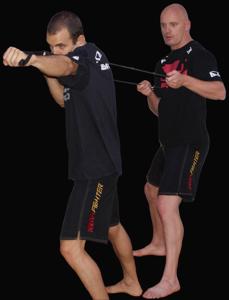 With a brutal sport like Mixed Martial Arts, even if you are not training or competing professionally, having tremendous conditioning is the most important aspect of your training. You need the conditioning to outlast your opponent as the rounds lag on. Fatigue is a huge factor in all sports. You need the edge in cardio to push it to the limit whenever you need to.
With a brutal sport like Mixed Martial Arts, even if you are not training or competing professionally, having tremendous conditioning is the most important aspect of your training. You need the conditioning to outlast your opponent as the rounds lag on. Fatigue is a huge factor in all sports. You need the edge in cardio to push it to the limit whenever you need to.
SO which training program?
When engaging in any workout program, a good question to ask yourself is: What is my goal? i.e. Is it to finish all my opponents within 20 seconds so that I do not need to worry about going the full length in fights or is it knowing that I am able to fight the full 3 or 5 rounds at a high level with enough gas in the tank? Asking this question will help you identify whether or not your current training routine is leading you down the right path. This is especially important when you are speaking in terms of sport specific conditioning.
Here are some helpful hints: First off, you want the exercises and workouts you use to reflect the kind of conditioning you need in a fight. For example, MMA fights are of a very high intensity level. You are constantly moving, changing positions, engaging in explosive movements, breaking your breathing pattern, using a wide variety of different movements and using your entire body at full intensity for a given time period. It may seem obvious, but the same conditioning routine that works for a professional athlete of a different sport, while it may improve your overall conditioning, it isn’t necessarily going to improve your MMA conditioning. Likewise, the conditioning you use to train for a triathlon is not the same as the conditioning needed for a MMA fight. So while your exercise selection is important, the first problem you need to address is how to organize your workouts. You can use the best exercises available, but if you don’t combine them in a way that makes sense as a mixed martial artist, your conditioning will never get to that higher level.
“Tough is not the way you act. Tough is the way you train!”
The simplest thing you can do is organize your workout in several circuits. Each circuit represents the round of a fight. During each circuit, you can use a variety of exercises, but the important thing is that each circuit lasts for at least five minutes without stopping at all. Then you stack three to five of these circuits on top of each other.
Endurance is the name of the game
 You can have all the strength in the world, but without gas in your tank, it is useless. So while it is good to have as much strength as possible, you also have to have a real MMA conditioning routine. “If you are tired you’re not strong, if you are tired you’re not fast, if you’re tired you don’t have good technique, and if you’re tired you’re not even smart” Dan InosantoStrength is great. All mixed martial artists need strength. Having more strength than your opponent is always going to be an advantage. But the problem comes from focusing too much on strength, and having your conditioning suffer from it. A hardcore power lifting routine is not the answer to achieve ultimate MMA conditioning. If you look at the best MMA fighters in the world, they have MMA specific training routines ensuring they perform as a complete athlete. Their conditioning routines are like the foundation of a hotel building, whereas the power lifting routine is the penthouse on the top floor. Of course the penthouse is a nice bonus, but without the foundation, it is worthless.
You can have all the strength in the world, but without gas in your tank, it is useless. So while it is good to have as much strength as possible, you also have to have a real MMA conditioning routine. “If you are tired you’re not strong, if you are tired you’re not fast, if you’re tired you don’t have good technique, and if you’re tired you’re not even smart” Dan InosantoStrength is great. All mixed martial artists need strength. Having more strength than your opponent is always going to be an advantage. But the problem comes from focusing too much on strength, and having your conditioning suffer from it. A hardcore power lifting routine is not the answer to achieve ultimate MMA conditioning. If you look at the best MMA fighters in the world, they have MMA specific training routines ensuring they perform as a complete athlete. Their conditioning routines are like the foundation of a hotel building, whereas the power lifting routine is the penthouse on the top floor. Of course the penthouse is a nice bonus, but without the foundation, it is worthless.
Your first concern should always be conditioning. You need to have a solid MMA conditioning routine that you perform regularly. This main conditioning workout doesn’t have to last a long time and you only need to perform it two to three times per week. But the results you will gain from the right conditioning routine, will pay off big with much better performance in the gym and in the cage. Some of strongest and most physically gifted athletes in the sport struggle their entire career with poor conditioning because they do not understand how that strength and power does not equal conditioning in a fight. Training for conditioning is the only thing that will give you the necessary conditioning for MMA, grappling or whatever combat sport you are involved in.
Vary your training environment if possible
Exposing your body to as much variation and conditions if possible will give you the edge when wanting to perform under extreme conditions. Environmentally it is possible to be exposed to:
1. Sea level
2. Highveld (The Highveld is a high plateau region of inland South Africa)
3. Mountains
4. Heat/humidity
5. Cold
The most important adaptation for the MMA athlete is an increase in the number of red blood cells, which are produced in response to greater release of the hormone erythropoietin (EPO) by the kidneys.
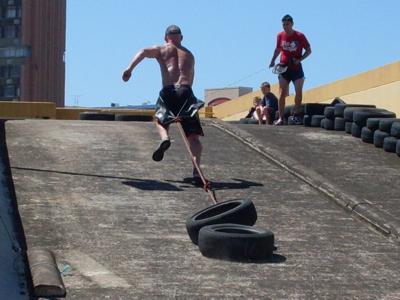 Red cells carry oxygen from your lungs to your muscles. More red cells means your blood can carry more oxygen, which partly makes up for the shortage of oxygen in the air. So to compete in a MMA event, you should live and train in oxygen deprived environments for several weeks before the event. The extra blood cells supercharge your muscles with oxygen and push you along with greater endurance than ever! In a recent discussion between experts on altitude training for athletics, the average best altitude and best duration at altitude were 2200 m for 4 weeks. It was also agreed that the effects of altitude training were optimal 2 to 3 weeks after return from altitude.
Red cells carry oxygen from your lungs to your muscles. More red cells means your blood can carry more oxygen, which partly makes up for the shortage of oxygen in the air. So to compete in a MMA event, you should live and train in oxygen deprived environments for several weeks before the event. The extra blood cells supercharge your muscles with oxygen and push you along with greater endurance than ever! In a recent discussion between experts on altitude training for athletics, the average best altitude and best duration at altitude were 2200 m for 4 weeks. It was also agreed that the effects of altitude training were optimal 2 to 3 weeks after return from altitude.
SO what type of exercises?
Full body exercises are a must for MMA conditioning and when you use them, you closely simulate the strength and conditioning you need as a fighter. This is important for mixed martial artists because in a fight you use your body as one integrated unit, not as isolated muscle groups. The more variety the better, yes it has to be intense!
Use a lot of explosive drills like plyometric push-ups, bodyweight squats and lunges, squat jumps, medicine ball squats and resistance bands. All of these exercises are important because they build fitness, stamina, explosive strength and conditioning in your entire body. Even the basic exercises like pushups, pullups, situps, squats are great for fighters. They are especially great because you don’t need a gym or any expensive equipment to perform them.
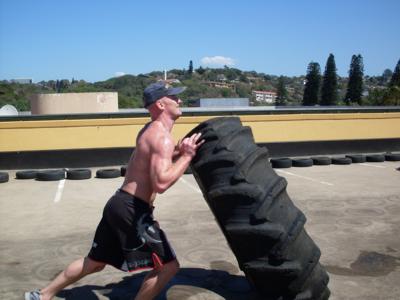
I have noticed that many fighters are using a wide variety of running workouts to train for MMA. The reason for this is that combat sports, especially mixed martial arts, require a wide variety of physical conditioning. You should need a wide variety of running to help build that conditioning. It is better to run for a shorter period of time at a higher intensity level to accommodate for the short time limits and intense nature of MMA fights. You can run very short distances at maximum intensity. You can run up hills. You can run in the sand. You can run up the stairs of a stadium. All of these things will improve your cardio and endurance. You can also run medium distances at moderate intensity. Two to four kilometres is ideal. Most mixed martial arts fights last only 15 minutes. So running for an hour at a slow pace is not only unnecessary, it’s often a waste of your time and recovery ability. Instead of running 10km every day, you can run 3km. Then you can run sprints two days a week. Long distance runs are not a complete waste of time as some trainers would have you believe. There are still many benefits, especially mentally, for doing long road work sessions. You just don’t need to do them every day. The wide variety of running should play an important role in your overall MMA workout routine. The thing to remember, as always, is that as the intensity of your running workouts increases, the rest time between workouts needs to increase as well i.e. don’t perform high intensity sprinting workouts on consecutive days.
Do more specific workouts in the 4 weeks leading up to the fight. Sprints and intervals are great, but they’re not specific to mixed-martial arts. The last 4 weeks or so leading up to the fight spend time on jumps, sprawls, quick feet drills, core stabilization exercises, explosive push-ups, reaction drills and mma specific performance games – all movements that are used in a fight, performed as quick and explosively as possible.
What about diet?
Eating correctly has got as much to do with your performance as the type of fuel you put into your motor vehicle. You are what you eat! Think about making small changes every week to your diet until you have lost all the bad habits. Quick guideline to improve your diet which will be directly related to your performance and health:
- week one – no more soft drinks at all, only water and non-sweetened teas and 100% fruit juices,
- week two – tripling your fresh vegetable intake
- week three – ensuring adequate daily protein,
- week four – eating five small meals a day instead of two or three monster meals,
- week five – ruthlessly eliminating all artificial sweeteners from your diet,
- and so on…
In conclusion
“It is only through work and strife that either nation or individual moves on to greatness. The great man is always the man of mighty effort, and usually the man whom grinding need has trained to mighty effort.”
Remember, you should train the way you want to perform. You only have so much time to train and so many physical resources, so make the most of them. You should compare your body and mind to a F1 racing car. Your vehicle is not going to perform to its fullest potential if you do not ensure you fill it with high performance fuel. This is directly related to ensuring you expose yourself to High Performance conditioning, a healthy nutritional diet and sufficient rest.

For more information about Morne Swanepoel and Morne Swanepoel’s Combat Coaching visit his website at http://combatcoaching.com and their listing on the Martial Arts Schools and Businesses Directory by clicking on the image on the left.


